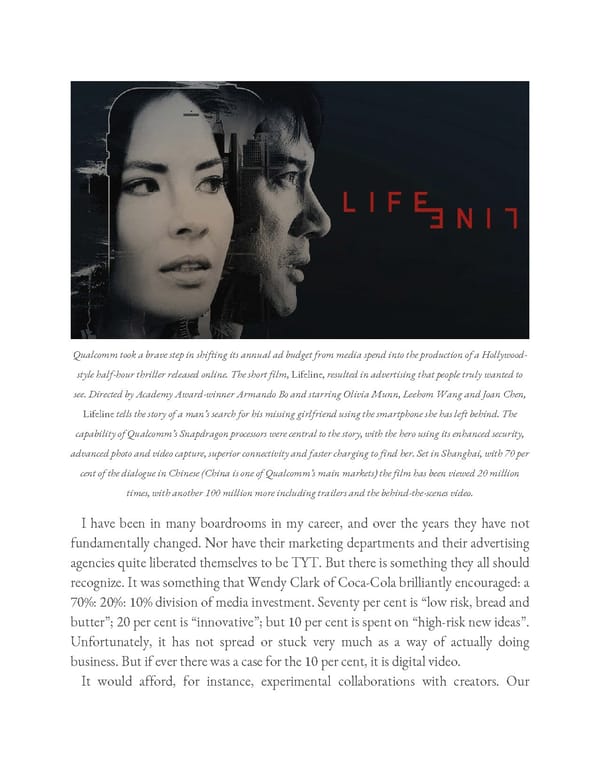Qualcomm took a brave step in shifting its annual ad budget from media spend into the production of a Hollywood- style half-hour thriller released online. The short film, Lifeline, resulted in advertising that people truly wanted to see. Directed by Academy Award-winner Armando Bo and starring Olivia Munn, Leehom Wang and Joan Chen, Lifeline tells the story of a man’s search for his missing girlfriend using the smartphone she has left behind. The capability of Qualcomm’s Snapdragon processors were central to the story, with the hero using its enhanced security, advanced photo and video capture, superior connectivity and faster charging to find her. Set in Shanghai, with 70 per cent of the dialogue in Chinese (China is one of Qualcomm’s main markets) the film has been viewed 20 million times, with another 100 million more including trailers and the behind-the-scenes video. I have been in many boardrooms in my career, and over the years they have not fundamentally changed. Nor have their marketing departments and their advertising agencies quite liberated themselves to be TYT. But there is something they all should recognize. It was something that Wendy Clark of Coca-Cola brilliantly encouraged: a 70%: 20%: 10% division of media investment. Seventy per cent is “low risk, bread and butter”; 20 per cent is “innovative”; but 10 per cent is spent on “high-risk new ideas”. Unfortunately, it has not spread or stuck very much as a way of actually doing business. But if ever there was a case for the 10 per cent, it is digital video. It would afford, for instance, experimental collaborations with creators. Our
 Ogilvy on Advertising in the Digital Age Page 252 Page 254
Ogilvy on Advertising in the Digital Age Page 252 Page 254